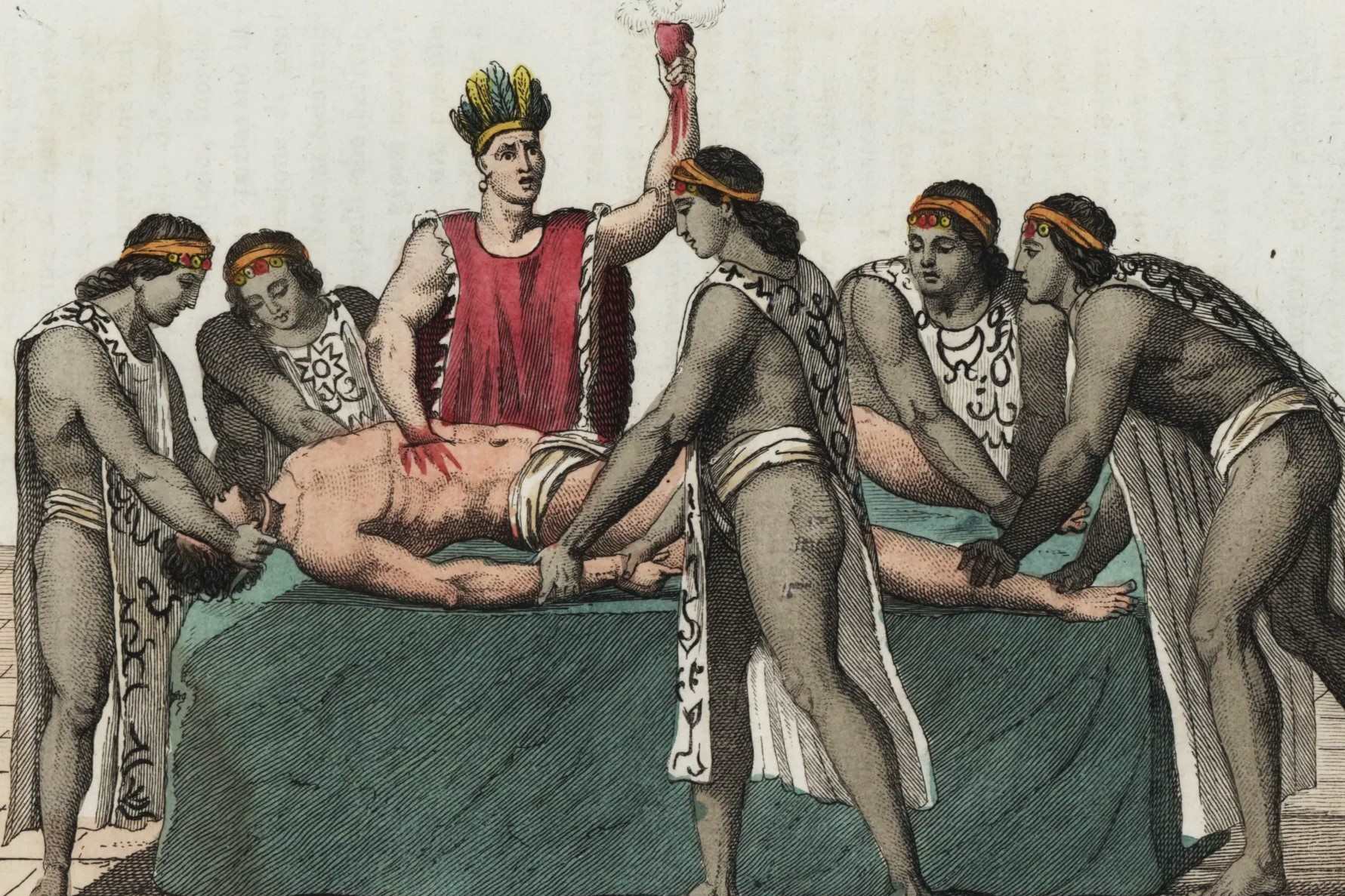
Did you know the Mayans practiced human sacrifice to please their gods? These ancient rituals were not just random acts of violence but deeply rooted in their culture and religion. The Mayans believed that blood was a potent source of nourishment for their deities. Human sacrifice was considered the ultimate offering, ensuring the balance of the universe and the prosperity of their society. From elaborate ceremonies to the selection of victims, every detail held significant meaning. Understanding Mayan sacrifice rituals offers a glimpse into their complex belief system and societal structure. Ready to dive into the world of Mayan rituals? Let's explore 35 intriguing facts about these ancient practices.
Key Takeaways:
- The Mayans believed that sacrifice rituals were essential to maintain balance in the universe and nourish their gods with life force, using various forms of offerings including bloodletting, animal sacrifices, and human offerings.
- Sacrifice rituals were deeply symbolic and performed in significant locations such as temples, cenotes, and ball courts. The legacy of Mayan sacrifice rituals continues to intrigue scholars and is still honored by modern Mayan descendants.
The Origins of Mayan Sacrifice Rituals
Mayan sacrifice rituals are among the most fascinating and misunderstood aspects of ancient Mesoamerican culture. These rituals were deeply rooted in their beliefs and cosmology.
- The Mayans believed that sacrifices were necessary to appease their gods and ensure the balance of the universe.
- Human sacrifice was considered the ultimate offering, as it was believed to nourish the gods with life force.
- Sacrifices were often performed during significant events, such as the dedication of a new temple or the crowning of a new king.
- The practice of sacrifice dates back to the Preclassic period, around 2000 BCE.
Types of Sacrifices
The Mayans performed various types of sacrifices, each with its own significance and method.
- Bloodletting was a common form of sacrifice, where individuals would pierce their skin to offer blood to the gods.
- Animal sacrifices were also prevalent, with jaguars, dogs, and birds being the most commonly used animals.
- Human sacrifices were reserved for the most important ceremonies and were often conducted by priests or rulers.
- Offerings of food, jade, and other valuable items were also made to the gods.
The Role of Priests and Rulers
Priests and rulers played a crucial role in Mayan sacrifice rituals, acting as intermediaries between the gods and the people.
- Priests were responsible for conducting the rituals and ensuring they were performed correctly.
- Rulers often participated in bloodletting ceremonies to demonstrate their piety and connection to the gods.
- The high priest, known as the Ah Kin Mai, held the highest religious authority and oversaw major sacrificial events.
- Priests used intricate calendars to determine the most auspicious times for sacrifices.
The Sacrificial Process
The process of sacrifice was elaborate and filled with symbolism, reflecting the Mayans' deep spiritual beliefs.
- Victims were often painted blue, a color associated with sacrifice and the gods.
- The heart was considered the most potent offering and was often removed while still beating.
- Sacrificial altars, known as chacmools, were used to hold the offerings.
- The ritual often included music, dance, and the burning of incense to create a sacred atmosphere.
Locations of Sacrifices
Sacrifices were performed in various locations, each chosen for its spiritual significance.
- Temples and pyramids were common sites for sacrifices, symbolizing the connection between the earth and the heavens.
- Cenotes, natural sinkholes filled with water, were also used for sacrifices, believed to be portals to the underworld.
- Ball courts were another important location, where ritual games often ended in sacrifice.
- Sacred caves were used for sacrifices, as they were thought to be entrances to the underworld.
The Victims of Sacrifice
The selection of sacrificial victims was a complex process influenced by various factors.
- Prisoners of war were often chosen as sacrificial victims, seen as offerings to the gods of war.
- Nobles and high-ranking individuals could also be sacrificed, especially during times of crisis.
- Children were sometimes sacrificed, believed to be pure and more pleasing to the gods.
- Volunteers occasionally offered themselves for sacrifice, seeking honor and a place in the afterlife.
The Aftermath of Sacrifice
The aftermath of a sacrifice was as important as the ritual itself, with various practices to honor the gods and the victims.
- The remains of sacrificial victims were often buried in sacred locations, such as temple foundations.
- Offerings of food and drink were made to the gods to accompany the sacrifice.
- Ritual feasting and celebrations followed sacrifices, reinforcing community bonds.
- The blood of the victims was sometimes used to anoint statues of the gods.
The Symbolism of Sacrifice
Sacrifice rituals were rich in symbolism, reflecting the Mayans' complex worldview.
- The heart symbolized life and the sun, central to Mayan cosmology.
- Blood was seen as a vital substance that connected humans to the gods.
- The act of sacrifice represented the cycle of life, death, and rebirth.
- The use of specific colors, such as blue and red, had deep symbolic meanings related to the gods and the cosmos.
The Legacy of Mayan Sacrifice
The legacy of Mayan sacrifice rituals continues to captivate and intrigue scholars and enthusiasts alike.
- Archaeological discoveries have provided valuable insights into the practice of sacrifice.
- Modern Mayan descendants still honor their ancestors' traditions through rituals and ceremonies.
- The study of Mayan sacrifice rituals helps us understand the broader cultural and religious context of ancient Mesoamerica.
The Legacy of Mayan Sacrifice Rituals
Mayan sacrifice rituals were more than just acts of violence. They were deeply rooted in their religion, culture, and worldview. These rituals were believed to maintain cosmic balance, appease gods, and ensure agricultural fertility. While the methods might seem brutal today, they were integral to Mayan society. Understanding these practices gives us a glimpse into the complexities of ancient civilizations. It’s fascinating how these rituals, though harsh, played a crucial role in the Mayan way of life. They remind us that history is filled with diverse beliefs and customs. The legacy of Mayan sacrifices continues to intrigue historians and archaeologists, shedding light on a civilization that was both advanced and enigmatic. As we learn more, we gain a deeper appreciation for the rich tapestry of human history.
Frequently Asked Questions
Was this page helpful?
Our commitment to delivering trustworthy and engaging content is at the heart of what we do. Each fact on our site is contributed by real users like you, bringing a wealth of diverse insights and information. To ensure the highest standards of accuracy and reliability, our dedicated editors meticulously review each submission. This process guarantees that the facts we share are not only fascinating but also credible. Trust in our commitment to quality and authenticity as you explore and learn with us.


